Yamaha YZF-R125 Service Manual: Adjusting the front wheel static balance
NOTE:
- After replacing the tire, wheel or both, the front wheel static balance should be adjusted.
- Adjust the front wheel static balance with the brake discs installed.
1. Remove:
- Balancing weight(s)
2. Find:
- Front wheel's heavy spot
NOTE:
Place the front wheel on a suitable balancing stand.
a. Spin the front wheel.
b. When the front wheel stops, put an "X1" mark at the bottom of the wheel.
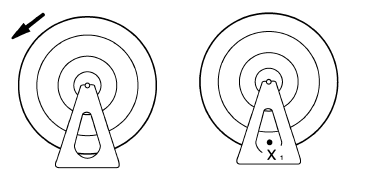
c. Turn the front wheel 90 so that the "X1" mark is positioned as shown.
d. Release the front wheel.
e. When the wheel stops, put an "X2" mark at the bottom of the wheel.
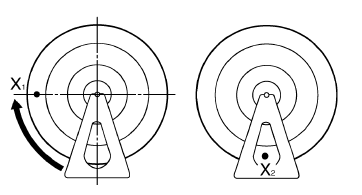
f. Repeat steps (c) through (e) several times until all the marks come to rest at the same spot.
g. The spot where all the marks come to rest is the front wheel's heavy spot "X".
3. Adjust:
- Front wheel static balance
a. Install a balancing weight "1" onto the rim exactly opposite the heavy spot "X".
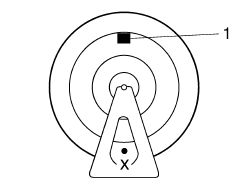
NOTE:
Start with the lightest weight.
b. Turn the front wheel 90 so that the heavy
spot is positioned as shown.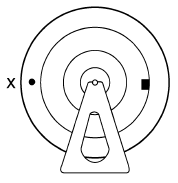
c. If the heavy spot does not stay in that position, install a heavier weight.
d. Repeat steps (b) and (c) until the front wheel is balanced.
4. Check:
- Front wheel static balance
a. Turn the front wheel and make sure it stays at
each position shown.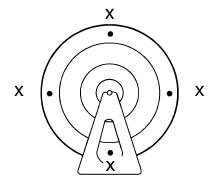
b. If the front wheel does not remain stationary at all of the positions, rebalance it.
 Assembling the front wheel
Assembling the front wheel
1. Install:
Wheel bearings
Oil seal
a. Install the new wheel bearings and oil seal in
the reverse order of disassembly.
CAUTION:Do not contact the wheel bearing inner
race
" ...
 Installing the front wheel (disc)
Installing the front wheel (disc)
1. Install:
Front brake disc
NOTE:
Be sure to install the front brake disc with the
arrow mark "a" on the disc facing out.
Tighten the brake disc bolts in stages and in a
crisscross p ...
Other materials:
Cleaning the air filter element
NOTE:
There is a check hose "1" at the bottom of the air
filter case. If dust and/or water collects in this
hose, clean the air filter element and air filter
case.
1. Remove:
Rider seat
Refer to "GENERAL CHASSIS" on page 4-1.
2. Remove:
Fuel tank
Refer to "FUEL TANK" on page ...
Installing the radiator
1. Fill:
Cooling system
(with the specified amount of the recommended
coolant)
Refer to "CHANGING THE COOLANT" on
page 3-15.
2. Check:
Cooling system
Leaks Repair or replace any
faulty part.
3. Measure:
Radiator cap opening pressure
Below the specified pressure Repla ...
Adjusting the throttle cable free play
Throttle cable free play
The throttle cable free play should measure
3.0-5.0 mm (0.12-0.20 in) at the
throttle grip. Periodically check the
throttle cable free play and, if necessary,
adjust it as follows.
TIP
The engine idling speed must be correctly
adjusted before checkin ...
